Zongliang Li
Level-aware Haze Image Synthesis by Self-Supervised Content-Style Disentanglement
Mar 11, 2021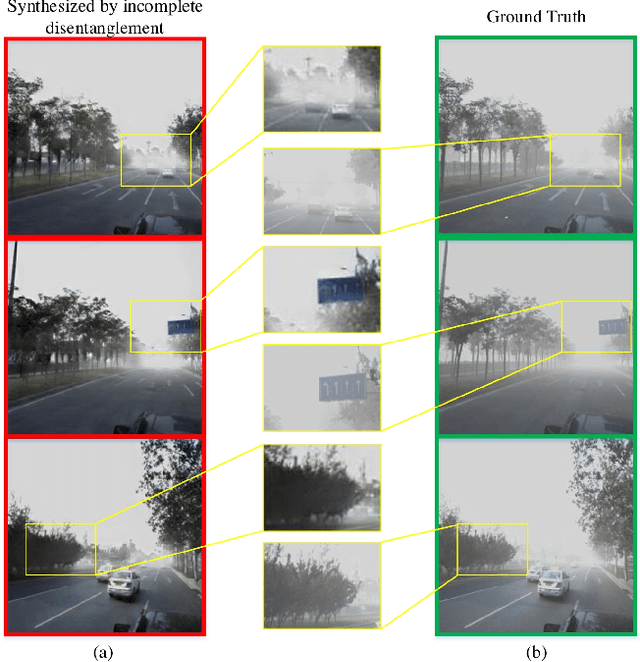
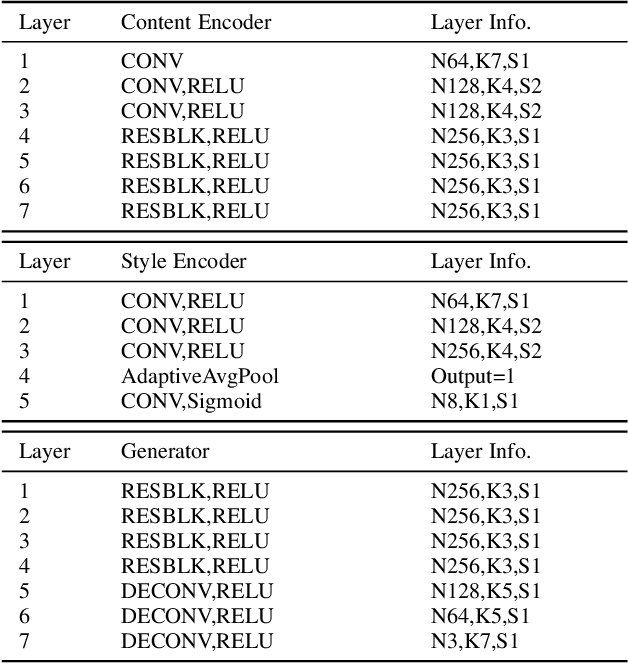
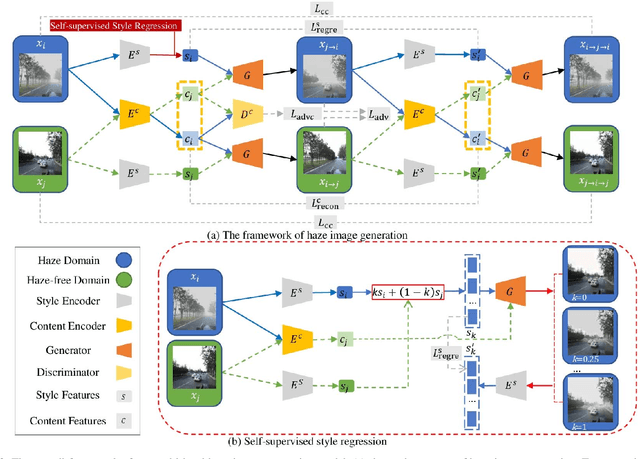

Abstract:The key procedure of haze image translation through adversarial training lies in the disentanglement between the feature only involved in haze synthesis, i.e.style feature, and the feature representing the invariant semantic content, i.e. content feature. Previous methods separate content feature apart by utilizing it to classify haze image during the training process. However, in this paper we recognize the incompleteness of the content-style disentanglement in such technical routine. The flawed style feature entangled with content information inevitably leads the ill-rendering of the haze images. To address, we propose a self-supervised style regression via stochastic linear interpolation to reduce the content information in style feature. The ablative experiments demonstrate the disentangling completeness and its superiority in level-aware haze image synthesis. Moreover, the generated haze data are applied in the testing generalization of vehicle detectors. Further study between haze-level and detection performance shows that haze has obvious impact on the generalization of the vehicle detectors and such performance degrading level is linearly correlated to the haze-level, which, in turn, validates the effectiveness of the proposed method.
Joint haze image synthesis and dehazing with mmd-vae losses
May 15, 2019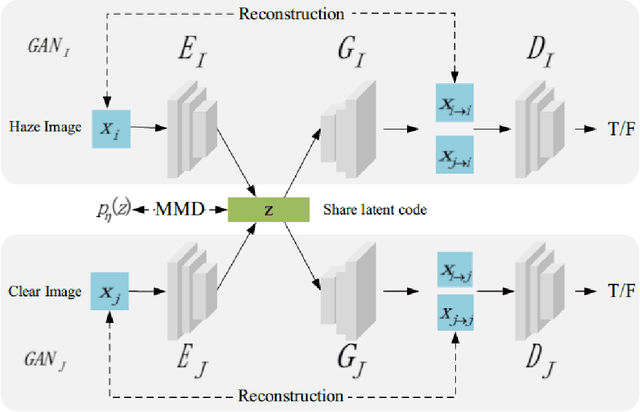
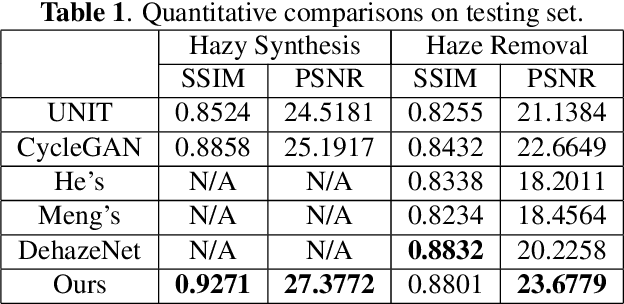


Abstract:Fog and haze are weathers with low visibility which are adversarial to the driving safety of intelligent vehicles equipped with optical sensors like cameras and LiDARs. Therefore image dehazing for perception enhancement and haze image synthesis for testing perception abilities are equivalently important in the development of such autonomous driving systems. From the view of image translation, these two problems are essentially dual with each other, which have the potentiality to be solved jointly. In this paper, we propose an unsupervised Image-to-Image Translation framework based on Variational Autoencoders (VAE) and Generative Adversarial Nets (GAN) to handle haze image synthesis and haze removal simultaneously. Since the KL divergence in the VAE objectives could not guarantee the optimal mapping under imbalanced and unpaired training samples with limited size, Maximum mean discrepancy (MMD) based VAE is utilized to ensure the translating consistency in both directions. The comprehensive analysis on both synthesis and dehazing performance of our method demonstrate the feasibility and practicability of the proposed method.
 Add to Chrome
Add to Chrome Add to Firefox
Add to Firefox Add to Edge
Add to Edge